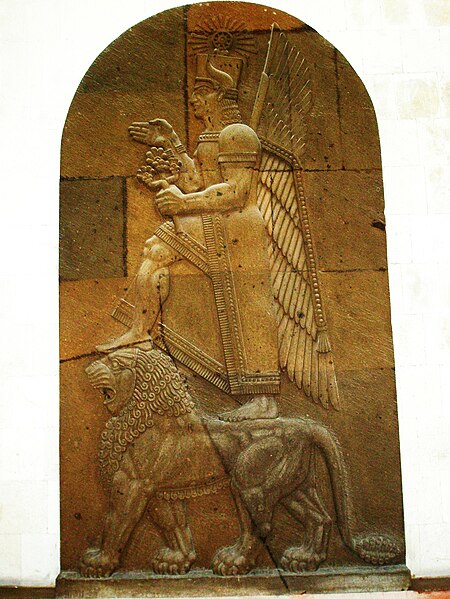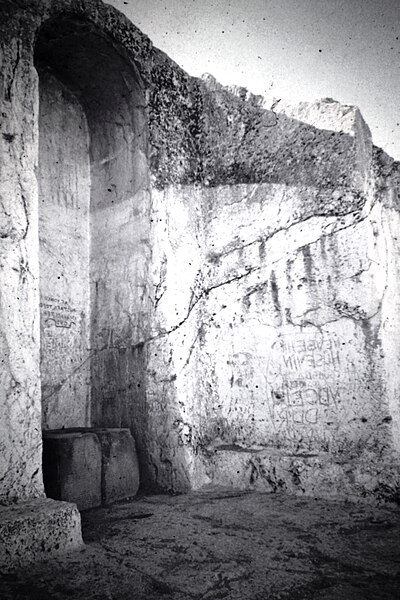Ḫaldi was one of the three chief deities of Urartu along with Teisheba and Shivini. He was a warrior god to whom the kings of Urartu would pray for victories in battle. Ḫaldi was portrayed as a man with or without wings, standing on a lion.
Possible depiction of the Araratian god Khaldi, standing on a lion. Erebuni Fortress Museum: Yerevan, Armenia
Column base; the god Khaldi stands on a lion, holding in his left hand a bowl and in his right hand a spearhead (or a plant) Reign of King Rusa II (685–645 BCE); Urartu; Museum of Anatolian Civilizations, Ankara
Khaldi's temple in Erebuni, 782 BCE
Erebuni Fortress
Urartu was an Iron Age kingdom centered around Lake Van in the Armenian Highlands. It extended from the eastern bank of the upper Euphrates River to the western shores of Lake Urmia and from the mountains of northern Iraq to the Lesser Caucasus Mountains. Its kings left behind cuneiform inscriptions in the Urartian language, a member of the Hurro-Urartian language family. Since its re-discovery in the 19th century, Urartu, which is commonly believed to have been at least partially Armenian-speaking, has played a significant role in Armenian nationalism.
Fragment of a bronze helmet from Argishti I's era. The "tree of life", popular among the ancient societies, is depicted. The helmet was discovered during the excavations of the fortress Of Teyshebaini on Karmir-Blur (Red Hill).
Niche and base for a destroyed Urartian stele, Van citadel, 1973.
Urartian stone arch near Van, 1973. [citation needed]
Urartian tomb complex, Van citadel, 1973.







![Urartian stone arch near Van, 1973. [citation needed]](https://upload.wikimedia.org/wikipedia/commons/thumb/a/a7/Urartian_arch_near_Van._1973.jpg/640px-Urartian_arch_near_Van._1973.jpg)
